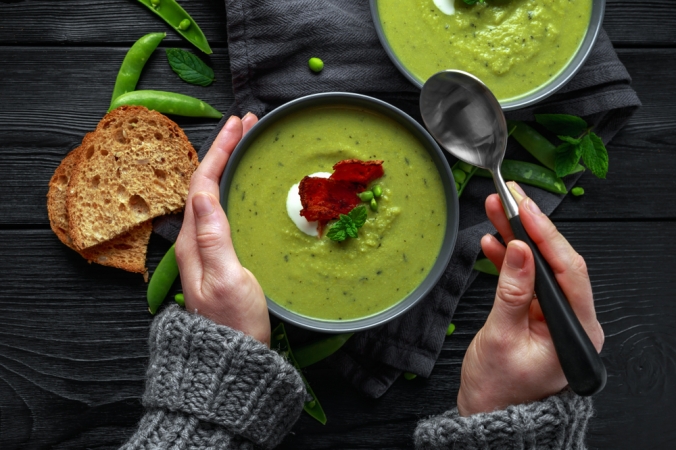With the dreaded cold season rapidly approaching, now is the time to take steps to keep them at bay. What’s on your plate at each meal time can have a really positive effect in boosting the immune system and improving your health all winter long. And not forgetting that each meal time is an opportunity for including as many nutrients as possible for all-round great health.
Clinical Nutritionist Suzie Sawyer shares her top tips for making each meal an immune-booster.
MAKE YOUR MORNING COUNT
In so many ways, breakfast is the most important meal of the day. You’ve fasted through the night and the body is now looking for a really nutritious and energy-boosting start to the day. Moreover, eating a nutrient-rich breakfast provides the perfect opportunity to get your immune defences in great shape.
Try to include some dark berry fruits into your breakfast: many of the secrets to the health benefits of these little berries actually lie in their beautiful, dark colours. Berry fruits are rich in plant compounds known as anthocyanins (blueberries especially so), which are high in immune-boosting antioxidants, that help protect the body against infections. Blueberries, cherries, strawberries and blackberries are also packed with vitamin C, one of our key defenders.
These fruits are coming out of season now, although they’re still readily available in supermarkets. However, use them frozen in a berry smoothie with banana and avocado and you’ve got yourself one of the best starts to the day.
Clearly you’ll need something more filling as well, so you can also add these fruits as a topper to porridge or other oat-based cereals. Oats are full of beta-glucans which help support the immune system, so what better start to the day during the winter than with a warming bowl of porridge topped with berries to see you through till lunchtime.
For those on the run at breakfast-time, a pot of live natural yoghurt, which is full of immune-boosting friendly bacteria, also makes a great option. Make sure you add some berries for that ‘hit’ of antioxidants and vitamin C!
LUNCHTIME POWER UP
Even though you’ve had a nutritionally-rich breakfast, by lunchtime your energy levels will naturally be flagging; the body needs re-fuelling! It’s really important to include protein at lunch for a number of reasons. Protein is needed for the body to produce immunoglobulins, a key part of immune function that helps to fight invasion of nasty bugs. Moreover, it will help stem the common 3 p.m. energy slump.
So which proteins are best to eat? Oily fish such as salmon or mackerel, which are packed with healthy essential omega-3s, are great as a topper on a jacket sweet potato. Loaded with beta-carotene, sweet potatoes will also provide great support for the immune system.
If you’re vegetarian or vegan, or just fancy a change, then tempeh or tofu with some noodles or wholegrain brown rice also work really well. Tempeh is slightly higher in protein than tofu, plus it’s got a naturally nutty taste so tends to be more flavoursome.
The mineral zinc is essential for a healthy immune system and is often lacking in diets that are high in white, refined foods. All types of beans contain good levels of zinc and they also make great lunchtime staples in a wrap, salad or soup. Chickpeas are another good alternative, so adding some hummus and wholemeal pitta bread to your lunchtime menu, or having some falafels, are other useful options.
HEALTHY SUPPERTIME
After a long, hard day, an evening meal can often be a rushed affair which can lead to less nutrients being eaten. However, you don’t need to spend hours in the kitchen or a long time planning nutritious, immune-boosting meals.
Stir fries are always good because they’re quick and easy to prepare and you can use whatever happens to be in the fridge at the time. However, certain herbs such as garlic and ginger are real immune boosters and so can be included in lots of different dishes, especially stir fries, alongside your protein source and other vegetables.
Alternatively, why not make a warming and filling super soup? Butternut squash (full of beta-carotene which the body converts into Vitamin A as needed), lentils (high in zinc) and coconut (great for the immune system) together provide a real immunity hit. Plus, you can add other ingredients such as fish, chicken or beans for a more filling option. The best thing is that you can make this in advance and it will last a few days so you’ll have a healthy meal ready whenever energy levels are flagging.
Try to also include as many vegetables as possible into your evening meal for their vitamin C content. Red peppers, for example, are high in vitamin C, and are great added to a tray of roasted vegetables, which make a great accompaniment to any protein source. Other great immune-boosting roasting vegetables include sweet potatoes, turnips, onions, tomatoes and courgettes.
So include these immune-boosting foods at every mealtime this winter and keep those colds at bay.
FOR MORE GREAT DIET AND LIFESTYLE ADVICE:
Sign up to receive our blog and get a weekly dose of the latest nutrition, health and wellness advice direct to your inbox.
Follow us on Twitter @feelaliveuk for nutrition, lifestyle and well-being tips.
Visit us at www.feelaliveuk.com for the latest offers and exclusive Alive! content.
Follow and Chat with Suzie on Twitter @nutritionsuzie
For everything you need to know about vitamins, minerals and herbs visit our sister site Herbfacts




























